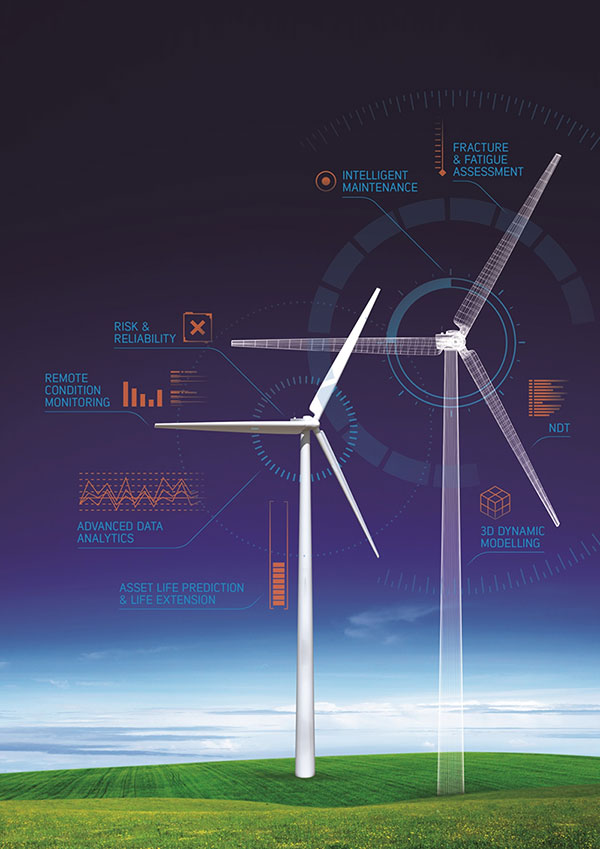A consortium of engineering technology experts comprising Agility3, Brunel University London, Dashboard, ESI and TWI Ltd has now begun work on the WindTwin project following a successful proposal to Innovate UK, the Government agency behind finding and driving the innovations that will grow the UK economy.
WindTwin is being developed specifically for the wind turbine industry. Its aim is to provide a solution to help mitigate the rapidly growing maintenance and operational costs associated with running wind turbines, and in turn support the optimisation of wind energy generation by the provision of more reliable, in-service wind turbines.
The project will harness digital twin technology in the form of a high fidelity, digital software platform combining operational sensor data with virtual system model data for the purpose of predictive maintenance of wind turbines. To facilitate this, the consortium members will develop and integrate a number of enabling technologies including high performance cloud computing, system fault and degradation modelling, data analytics and visualisation. A sensor network system, utilising optimised signal processing and condition monitoring algorithms, will be applied to the live wind turbine to collect operational data which will then interface with a replica, virtual 3D model, or digital twin, of the wind turbine. The output will be collated and processed data providing a description of the wind turbine’s multi-dimensional, dynamic behaviour and physical state during real time operations.

By using digital twin models, wind turbine operators will be provided with up-to-the-minute data on how their assets are performing rather than having to schedule in regular shutdown times for inspection and investigation, the outcomes of which may result in unwelcome detection of faults in wind turbines that have developed over time unnoticed.
Ángela Angulo, Senior Project Leader, Condition and Structural Health Monitoring at TWI explains, ‘The data to be provided by the WindTwin digital software platform has the potential to provide the wind turbine industry with many benefits. It will enable wind farm operators to better diagnose performance variations of the entire wind turbine asset down to its constituent individual components level; anticipate degradation and failures; and deploy condition-based maintenance instead of schedule-based strategies.’
‘The advancements delivered by WindTwin will help to minimise wind turbine downtime, and reduce inspection and maintenance costs. Operators will be able to virtually test maintenance upgrades before deployment and better control wind turbine setting, resulting in optimised wind turbine performance and energy output,’ she added.
WindTwin project’s thirty month duration will also see the consortium develop a business plan and go-to-market strategy to commercialise the new digital twin platform globally, as well as plans to expand into adjacent industries and applications.
Image shows a representation of digital twin technology for wind turbines.
For more information, please contact us.